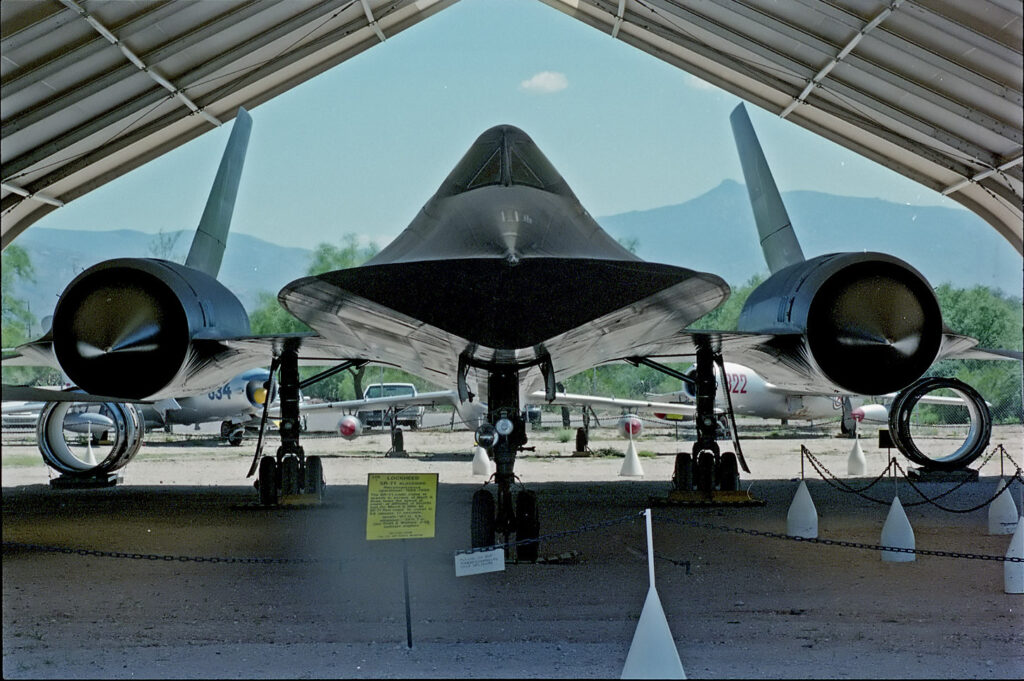
The Saab 37 Viggen is the Swedish Cold War-era fighter jet that showed its versatility and proficiency in a variety of roles such as air-to-air combat, ground attack, and also reconnaissance.

The Viggen had a top speed of Mach 1.7 and 16,000 pounds in firepower. From 1971, these Viggen were Swedish workhorses until they were taken out of the skies in 2007.

One of the most striking claims attributed to the Saab 37 Viggen is a successful intercept of an SR-71 Blackbird, one of the few fighters in the world that have reportedly gained a lock on this super-speed US spy plane.

The attainment is a clear testament to thorough planning and serious training by the Swedish Air Force. Outnumbered by the SR-71 Blackbird in terms of speed, the Viggen’s part in these non-confrontational intercepts highlights the former’s neutral defense readiness at the height of the Cold War.

The Saab 37 Viggen was nicknamed “Thunderbolt.” It was an all-weather, single-seat fighter aircraft, carrying a considerable range of munitions, from air-to-air and air-to-ground missiles to anti-ship missiles and conventional bombs.

This aircraft had a maximum speed of Mach 1.7, an operational ceiling of 60,000 feet, and the range for returning to the base after combat was 620 miles.

Saab and the Swedish Air Force started to develop the Viggen in the 1950s with a first flight in 1967 and a first entry into service in 1971. About 330 aircraft of all versions were built before being substituted by the JAS 39 Gripen.

The Viggen came in four different versions: the fighter jet Saab 37, the fighter-bomber AJ 37 made for air-to-ground missions, the reconnaissance SF 37, and the maritime patrol SH 37.

The SR-71 Blackbird was a long-range, top-secret aircraft designed to fly over the Soviet Union at Mach 3.2 and to altitudes of 85,000 feet.

The Soviet military had nothing that could respond to such performance, since even the fastest Russian fighter jet, the MiG-25 Foxbat, could only fly at Mach 2.8. In such circumstances, SR-71 could easily outaccelerate any incoming air defense missiles or Russian interceptors.

The Swedish Air Force devised tactics for intercepting the SR-71’s flight routes from Sweden to the Soviet Union.

Employing specially trained wings of Saab 37 Viggens, they sometimes surprised SR-71 crews and were able to couple with the very high-speed spy planes. These interceptions were not confrontational, and on one occasion, Viggen pilots helped a damaged SR-71 Blackbird.

In a related but equally important incident, the Russian attack on a NATO Patriot emplacement near the Ukrainian border on September 27, 2024, consumed hundreds of Iranian-made Shahed-107 drones.

Such increased usage nearly exhausted the Russian stockpiles, resulting in an agreement with Iran to deliver new units.

The cargo, along with other weapons, has reached Krasnodar city far from the Ukrainian borders, and is now being stored, ready to be transported to the Crimea via the Kerch Strait.

It is something like destroying this cargo, flying over Russian territory, attacking such targets on its soil, demolishing anti-aircraft defenses, and sabotaging nearby bases to prevent the early appearance of enemy fighters.